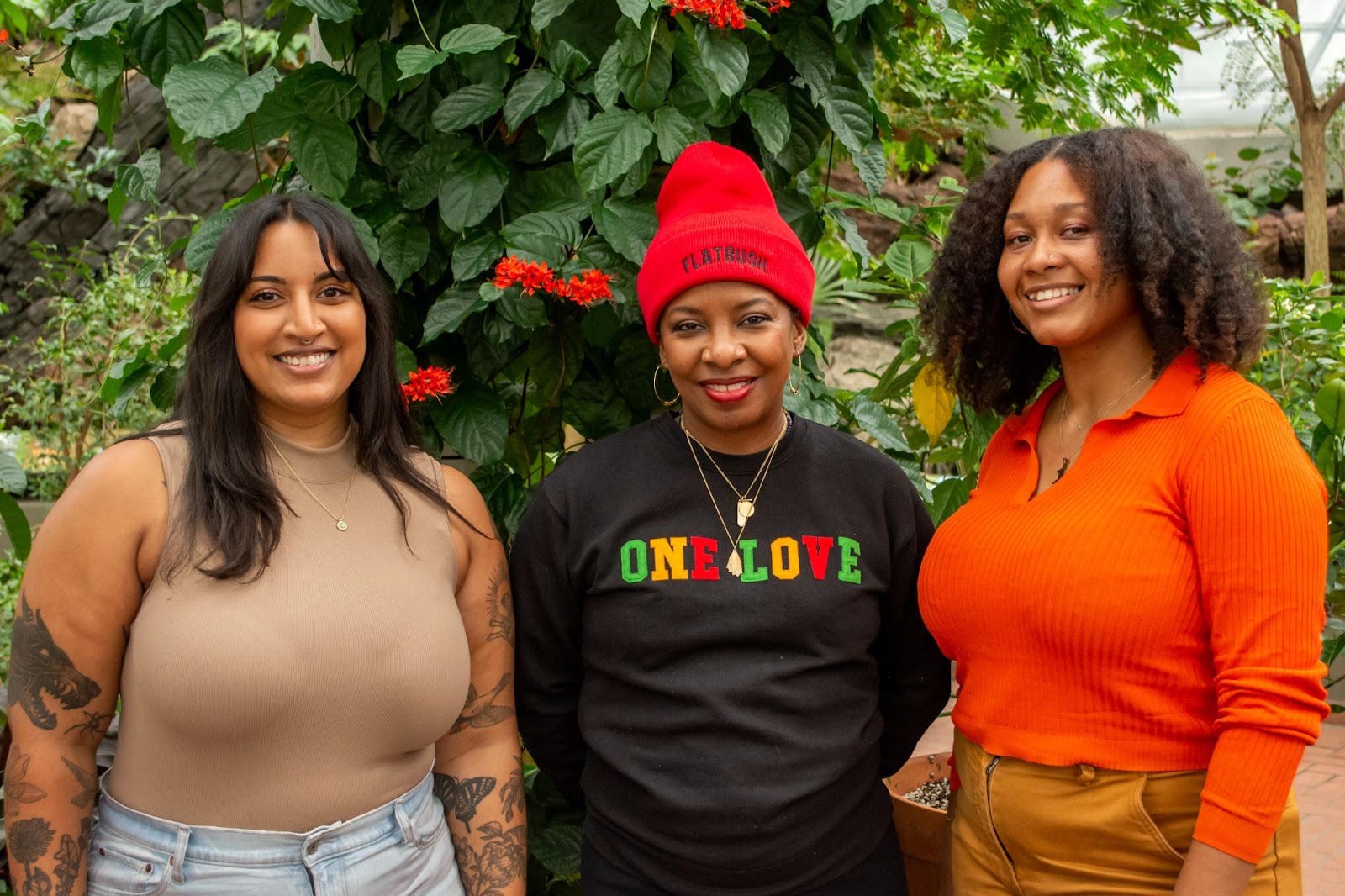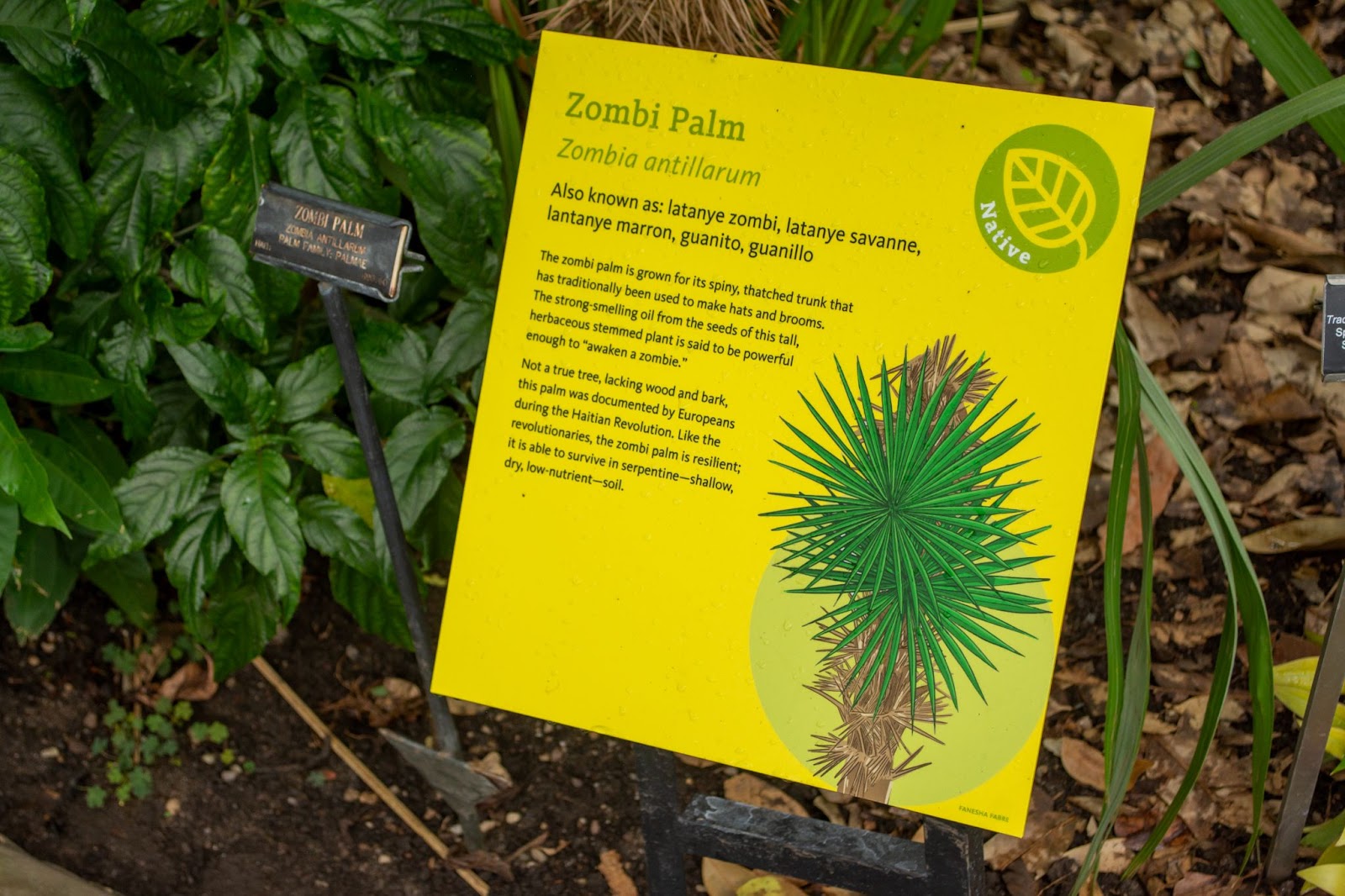In 2021, the Brooklyn Botanic Garden (BBG) was awarded a $178,668 Museums for America grant from Institute of Museum and Library Services (IMLS) in the Lifelong Learning category to expand its Interpretive Master Plan with the goal to become a more inclusive, living museum. The expansion project titled, Inclusive Master Plan, helped the Garden include a broader cross-section of perspectives and achieve its goals to become a more welcoming, urban museum. The project formalizes inclusive practices such as providing staff professional development, amplifying community voices, and expanding storytelling about the Garden’s history and collections through its staff and volunteers while strengthening the Garden’s ability to serve the public.
The first interpretive plan created in 2006 (also funded by the IMLS) focused on interactive interpretation and was heavily visitor-driven. “It was the first interpretive plan that the Garden had and it coincided with the Garden’s strategic planning process,” said Kate Fermoile, BBG’s Director of Interpretation and Exhibitions. “It was from this strategic planning process that the Garden established an interpretation department and hired its first Director of Interpretation, Sonal Bhatt.” Bhatt, now Vice President of Education and Interpretation, leads this new project with Fermoile. “[Bhatt] oversaw the first interpretive plan and its subsequent update in 2008. We updated the plan internally when I joined BBG to reflect more of the educational practices we were interested in, including more informal learning, more educational pop-ups, and conversations with visitors.” The first interpretive plan coincided with the Garden’s “Campaign for the Next Century” which added four new acres of garden space, new amenities, and permanent exhibitions. This Campaign invested more than $3 million in new interpretive signage and rotating exhibitions that focused on the intersection of art, science, and plants. The plan also created dialogue-based interpretation to support the Garden’s new “living classrooms.”
“I felt like we achieved almost all of the goals in the original interpretive plan,” said Fermoile. “And now, with this next interpretation or expansion, the Garden is looking from the perspective of where the world is in the 2020’s and BBG wants to be a community garden, not just a place for the community - but of the community. We need an interpretive plan to reflect that and to tell the stories that we know haven't been told.”
A visitor demographic survey conducted by BBG in 2015 found that 34% of its visitors are People of Color compared to an American Community Survey’s 2019 census data, cited by BBG in its IMLS grant application, 77% of Brooklyn Community District 9, 65% of Brooklyn, and 57% of New York City are People of Color. BBG wants this new interpretive plan to expand its representation of diverse experiences, to increase the opportunity for visitors to find relevance and connection to the Garden and its mission, and “to connect people to the world of plants, promote environmental stewardship, and engagement in science.” BBG also cited a 2017 Culture Track report by La Placa Cohen which suggests that one of the main reasons people choose not to visit a cultural institution is that they feel it is “not for them.” The same sentiment has been echoed in BBG surveys.
Fermoile hopes that this work will strengthen BBG’s ability to serve the public by using a co-creation model starting with BBG staff and volunteers. “We submitted this IMLS grant two years ago, in the midst of the pandemic, so what we were thinking about doing at the time ended up not being feasible in 2021 when we embarked on the project.” BBG originally planned on bringing in groups of community members and organizations for roundtable discussions and conversations. “But it was really hard to do in 2021 when so many people were still working remotely.” Instead, after a few internal conversations, BBG decided that it could start with the staff. “The Garden staff are also the community. They live and work in Brooklyn. We have 150 full-time and part-time staff and volunteers. We decided to turn our attention inward to start with the BBG community, thinking about a co-creation model where we would work with not just the heads of the Interpretation Department, or just a few people deciding on what stories we were telling, but to develop a model where we’re all co-creating together, telling stories that are important to all of us.” This co-creation model utilizes community feedback and shared perspectives from across the BBG staff and volunteers to create new public offerings from new viewpoints while still remaining focused on the Garden’s mission and shared goals.
The Garden hired Makalé Cullen, an ethnobotanist consultant with a background in folklore to work with people to gather and tell stories together. “Makalé put together a number of listening sessions with the staff and volunteers who are involved with our children’s programs, “Community Greening” (urban greening through education, conservation, and creative partnerships), and with teenagers who visit the Garden on a regular basis. In these sessions, she talked with the teenagers about the stories that interested them and asked if they would like to tell these stories themselves or if they would like to tell other stories that aren’t being told at BBG.”
The Inclusive Master Plan includes creating and developing an “Inclusive Community Engagement Guide” for staff and community constituents that will include a listening tool kit that includes recommended facilitation techniques, survey methods, conversation prompts, and additional criteria to ensure that inclusion and equity are prioritized in the process of co-creating multi-dimensional stories that will impact BBG’s approach to program development and exhibitions in the future. “We’re currently in the process of editing down a draft of this co-creation guide into something that the entire staff at BBG could use as part of the work they’re doing,” said Fermoile.
BBG is already piloting a number of stories that came from the staff listening sessions. “Something that we heard repeatedly in these sessions was that people wanted to see their culture reflected in the stories that we’re telling in the Garden. Brooklyn is a super diverse place and the Garden is 52 acres in the middle of this borough and borders Caribbean neighborhoods. BBG has Caribbean trees and plants and people would like to see themselves and their plants and stories told, not from a colonial perspective, but from their own perspective.”
 Shelley Worrell of I Am CaribBEING and Meera Jagroop and Chelsea Forgenie of Brooklyn Botanic Garden. Photo by Michael Stewart. Brooklyn Botanic Garden
Shelley Worrell of I Am CaribBEING and Meera Jagroop and Chelsea Forgenie of Brooklyn Botanic Garden. Photo by Michael Stewart. Brooklyn Botanic Garden
Fermoile brought in Chelsea Forgenie, BBG’s School Workshops Coordinator and Meera Jagroop, Director of Youth Programs (who are Caribbean Americans) to co-curate “Trees of Little Caribbean,” an exhibition that celebrates trees and treelike plants cherished by the Caribbean people that spark stories of rebellion, resilience, spirituality, and joy. The exhibition, located in the Steinhardt Conservatory, teaches people about native Caribbean trees like papaya, guava, soursop, and allspice as well as non-native plants, like the banana, that were brought from across the globe under colonization. “BBG partnered with Shelley Worrell, Co-founder of I AM CaribBEING, a cultural venue in Brooklyn that illuminates the Caribbean experience and communities throughout New York City that use our permanent collection to tell these stories,” said Fermoile. “It’s been a huge success for the creation of these partnerships, both with BBG staff and different cultural organizations in our community, and we’ve also seen a shift in visitorship since this exhibition opened in February. It’s hard to tell with quantiative statistics, but anecdotally through programming, we know this has increased the visitorship of people from the neighborhood. We’ve heard from our education staff that students are delighted to hear about plants and stories from their culture. It was a huge success to work with internal curators who do not typically do that kind in their day-to-day work. The exhibition is a whole different perspective and different voice.”
 Signage for the Trees of Little Caribbean exhibit. Photo by Michael Stewart.
Signage for the Trees of Little Caribbean exhibit. Photo by Michael Stewart.
In addition to creating a broader cross-section of perspectives through exhibitions and programming, BBG received additional funding from a private donor to hire a researcher to investigate the history of the land and organization. “I came to this position after being the Vice President for Exhibits and Education at the Brooklyn Historical Society and Tenement Museum as the Education Director, so I’m a history person and now I’m a history person who loves to talk about plants,” said Fermoile. “When I first started working here, I was amazed that when we would give tours and discuss how the garden, the 52 acres, was part of the terminal moraine Wisconsin glacier that created this space, and then we would jump to the early 19th century when people were using this space as an ash dump, and then it became a garden. They skipped a lot of important history about the people who first worked this land. There was so much we didn't know and we’re able to tell now. This additional funding allowed us to hire a historian to research primary sources and helped us uncover this history so we can include it in the stories that we’re telling and collecting.”
The Garden is also working with the Lenape Center, an organization founded in 2009 led by Lenape elders with a mission of continuing Lenapehoking, the Lenape homeland through community, culture, and art. “We’ve been working with them to develop a living land acknowledgment and to help weave their stories into the stories we’re telling here.”
BBG plans on introducing a draft of their Inclusive Community Engagement Guide at an all-staff retreat next February. They will continue to work with the interpretive committee that changes year to year based on different themes, and will hire an evaluator to assess the impact of the past two exhibitions developed using this co-creation model.
“I always learn so much from working with a team of people who are smart and creative and have great stories to tell,” said Fermoile. “Working with my colleagues this past year has been a joy and I've learned a lot. Our programs are richer and I think we’re headed in the right direction.”
Learn more about the Brooklyn Botanic Garden here: https://www.bbg.org/about
